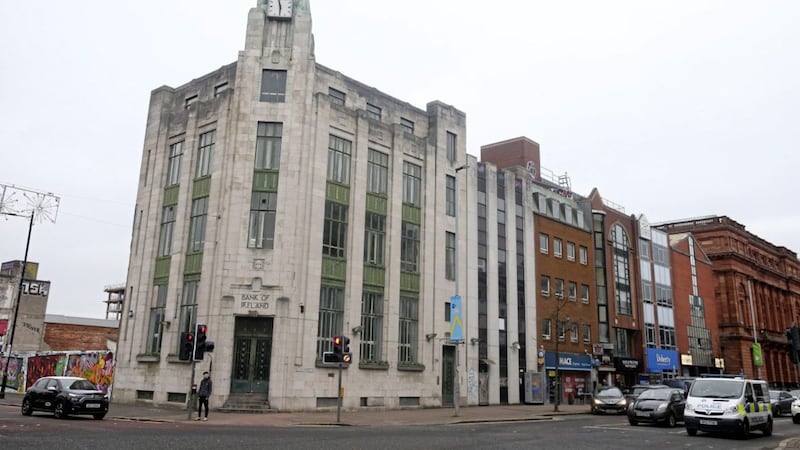Belfast City Council has long wanted to create a museum to tell the city’s story. Now it finally has a £100 million plan and a venue, after buying the empty art deco Bank of Ireland building and surrounding land from a developer. Museum exhibits are unlikely to dwell on how almost the entire historic block around the bank was demolished by developers in 2016.
An even bigger pile of magic beans may be accumulating at the adjacent Tribeca development, the latest scheme to rebuild the north west of the city centre, left increasingly derelict for 20 years. The £500 million project by London-based Castlebrooke Investments received outline permission from the council last year but no planning applications have been submitted for over two years and no actual development has occurred. The 12-acre site has probably increased in value, should it be put back on the market. This Belfast tale could run a while yet.
**
The Department of Health seemed to think it was rebutting an Irish News story about bureaucratic hurdles for retired medics trying to help out during the pandemic.
One former consultant told this newspaper he has been waiting three months after responding to the department’s own ‘workforce appeal’.
Asked how many applicants have so far been approved, the department replied: “Of the 927 applications that have been lodged via the Appeal to date, 347 (37 per cent) applicants are for clinical posts. This includes 33 applications for medical roles, 73 for nursing and 16 for pharmacy in total. Trusts are working through applications to ensure individuals are appointed to posts as quickly as possible.”
In other words, the system is failing to cope with 11 medical applicants per month.
**
Belfast-based think tank Pivotal made headlines last month with a report claiming students and graduates are driven away from Northern Ireland due to “poor community relations” and “political instability”.
This brain drain myth is widely believed, yet totally unsupported by statistics, which show we both retain and attract back more of our students and graduates than everywhere else in the UK except London and Manchester. The real problem is that Stormont caps university places in order to subsidise tuition fees, forcing some students to go to Britain.
This problem is getting worse, according to new Department of Education figures covering 2017 to 2020. They show more young people want to go to university, up from 42 to 47 per cent, and of those that do, more want to stay in Northern Ireland, up from 67 to 74 per cent - that is, from two-thirds to three-quarters. However, the cap on places has barely moved. Stormont’s fee subsidy, designed to keep young people here, is having the perverse effect of driving more of them away.
**
As this is the time of year for prognostication, I wish to boast of predicting the outcome of the DUP North-South Ministerial Council boycott case almost to the word.
Three weeks ago I wrote the judge could not enforce any order against ministers, so “the decision facing the court is how much it can scold the DUP without becoming embroiled in a pantomime.”
On December 20, the judge scolded the DUP but ruled he could not make any order as “it could not be enforced” and would lead to “a pantomime”.
A case against DUP agriculture minister Edwin Poots over the sea border, to be brought by loyalist blogger Jamie Bryson, will presumably end the same way.
This should start a wider debate on judicial reviews, which are not criminal or even civil trials. They merely ask a judge to arbitrate on whether someone has acted consistently. As findings are barely enforceable, the whole thing is often a parlour game.
The judge in the boycott case said he is minded for the DUP to pay everyone’s costs. It is debatable if legal aid should ever fund what can be, in effect, a political campaign tactic.
**
The annual dispute over what to call December 26 is fast supplanting the poppy row as the year’s most tedious argument. People are so keen to get stuck in they cannot even get the basics right: contrary to many claims, December 26 is still Boxing Day if it falls on a Sunday; only the bank holiday gets moved to Monday.
Sinn Fein’s youth wing may have been joking when it tweeted “it is the official position of the Republican Movement that Boxing Day does not exist”. But it then deleted the tweet, so the joke was apparently lost further up the chain of command. Perhaps someone was at a Boxing Day hunt.
The tradition of Boxing Day dates to distributing church poor boxes in honour of St Stephen, so only in Northern Ireland could Boxing Day and St Stephen’s Day be pitted against each other. They are in fact wonderfully unifying complements of our shared heritage, which the Gerry Juniors and Gerry Seniors should embrace with gusto. Maybe next year.









